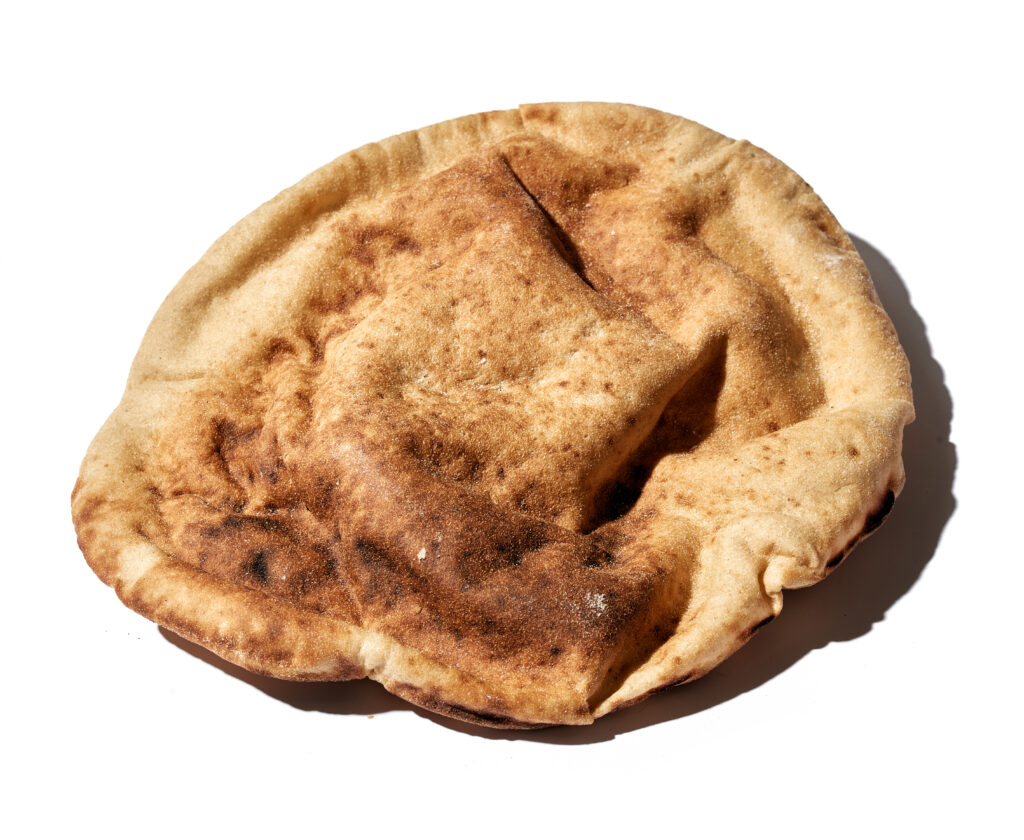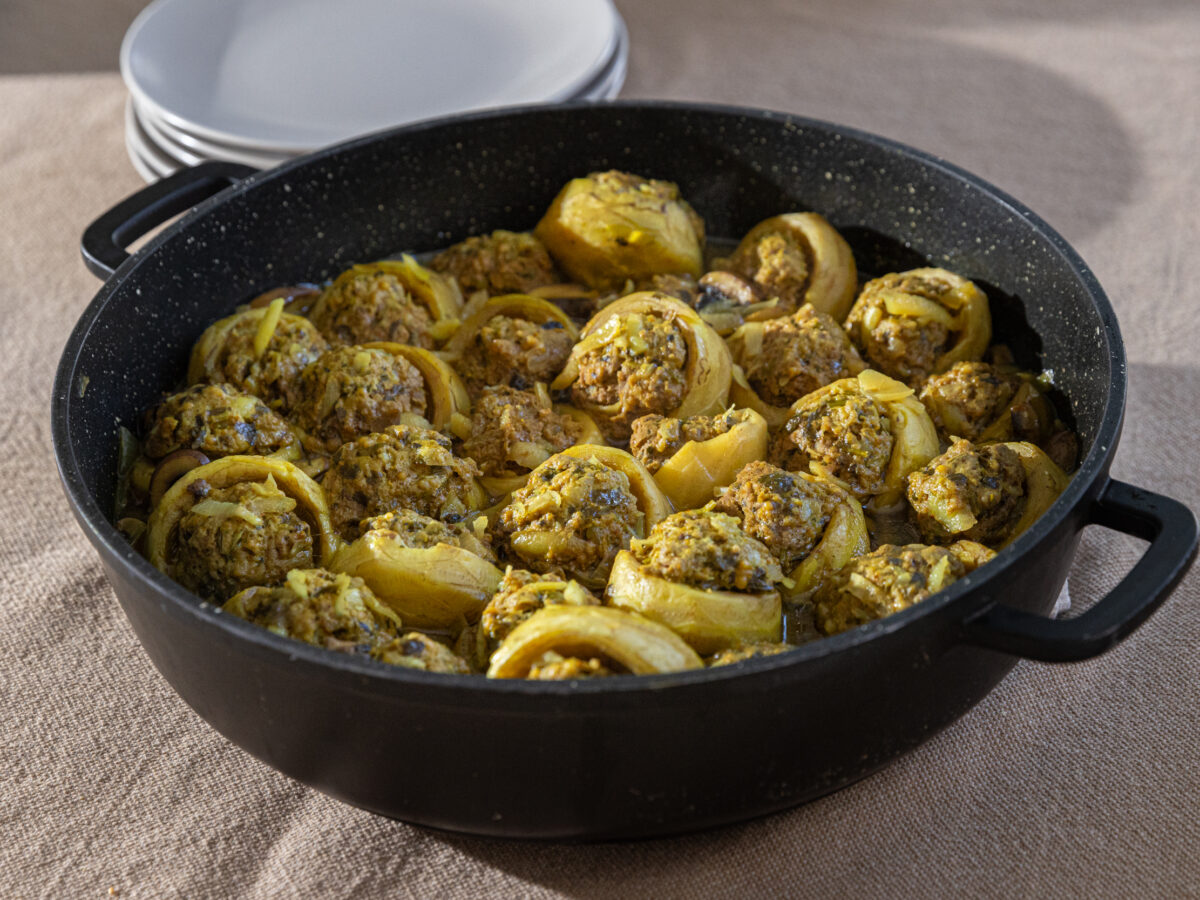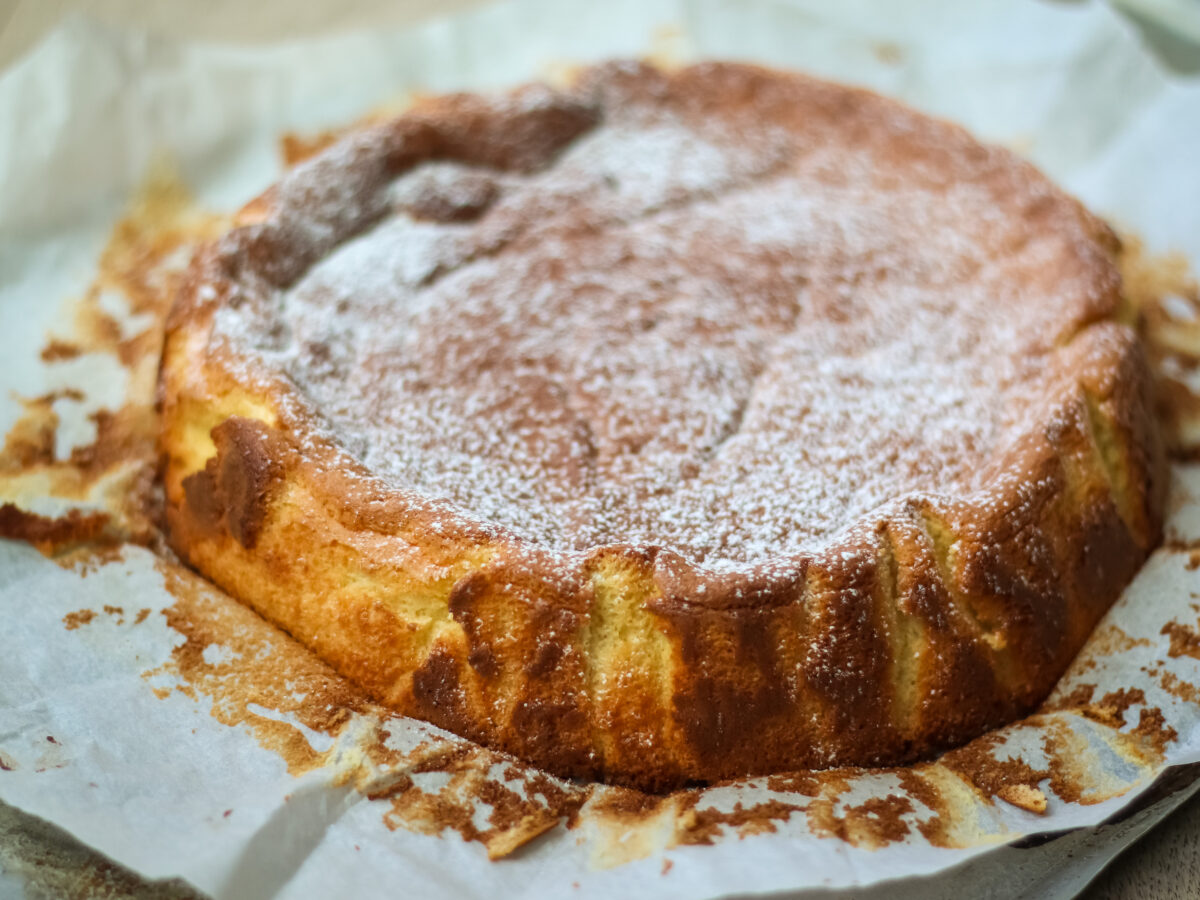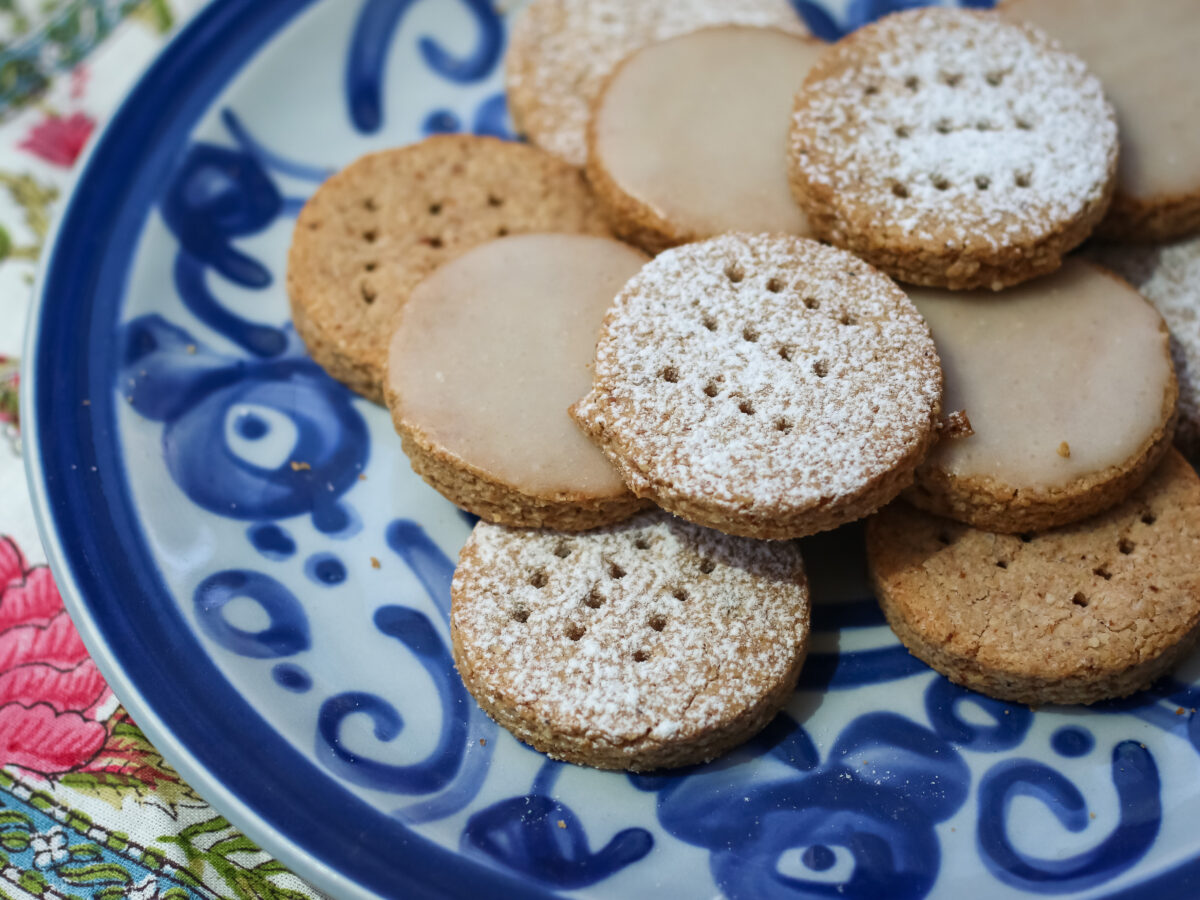
It seems that the word “kmaj” in the 17th century referred to a bread with a shape resembling a contemporary pita, that is, a flatbread with a pocket. The term comes from Persian: “kūmāj.” Creating a bread with a pocket requires a short baking time in an oven preheated to a very high temperature. The dough, which is not perforated to release steam, puffs up to the shape of a balloon, and the trapped steam is responsible for the walls pulling apart from one another even when the bread cools. In modern ovens, both home and professional, it is easier to reach the required temperature and humidity to create a pocket. In the early modern period and in pre-modern ovens, it was harder to achieve the desired result. Yet, the mention of the kamj among the baked goods sold daily on the streets of Jerusalem in the 17th century indicates that the technique was known — even if this bread was less common than the flat taboon breads without pockets.
Written sources indicate that in Jerusalem of the 1920s and 1930s, the local population still baked and consumed kmaj or kamaja — a round, wide bread with a pocket. The development of technology and the advanced mechanization in our days have made pocket breads — known today in Hebrew and Arabic mainly as “pita”— into the most widely available bread in modern Israel. The source of the word pita is subject to controversy. Some scholars argue that the name is taken from Greek, where it refers to a flat cake or pastry. Others maintain that it stems from ancient Jewish sources, which adopted it from Aramaic.
The invention of the modern pita, small and uniformly sized, apparently derives from the demand by street food vendors in the 1970s. The historic kmaj was larger than what is known today in industrial baking as the “100- gram pita,” which is typically filled with various local street foods such as falafel and shawarma. In neighboring countries — including Syria, Lebanon and Jordan — these foods are mostly served in flat breads that are rolled, not inside a baked pocket. In contemporary Palestinian Arabic, it is still common to refer to the industrially manufactured pocket breads as kmaj, while the term pita is generally used to describe the filled 100-gram pitas.
Baker Amr Msalha, a pioneer of the modern boutique Palestinian bakeries, examined how the kmaj was made in the pre-modern ovens.
Ingredients
- 3 cups + 2 tablespoons / 500 grams all-purpose flour
- 2 tablespoons / 20 grams sugar
- 2 teaspoons / 8 grams salt
- 1¼ cup / 300 grams water
- 1 teaspoon / 4 grams active dry yeast
- Olive oil, for greasing
Preparation
- Place the ingredients (except the oil) in the bowl of a stand mixer fitted with the dough hook and mix for 2 minutes on medium speed, until a dough forms. Increase to a high speed and knead for 6 minutes, to a soft and elastic dough. Transfer to a bowl lightly greased with olive oil, cover and let rise for 30 minutes.
- Divide the dough into 3½-ounces / 100-grams pieces, roll into balls, cover and let rise for 15 minutes.
- Place a pizza stone (or a baking tray) on the bottom of the oven and preheat to 475°F / 250°C.
- Roll each dough ball into a round pita, 7-8-inches / 18-20-cm in diameter, and place on a piece of parchment paper (a sheet should fit about 3 pitas). Cover and let rise for 10 minutes.
- Bake the pitas: carefully slide one sheet of paper onto the hot stone or tray and bake for 3 minutes. Flip the pitas and bake for 3 more minutes. Remove and cover with a towel. Repeat with the remaining pitas.




